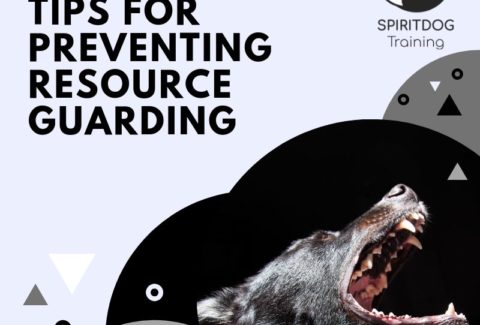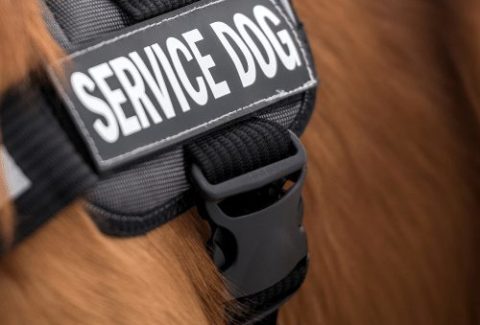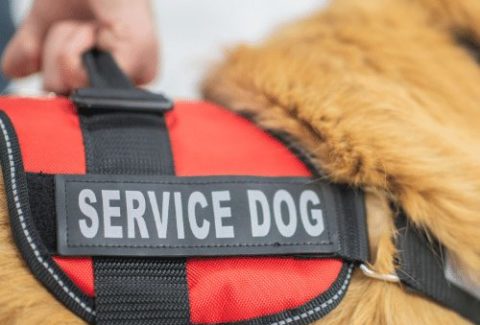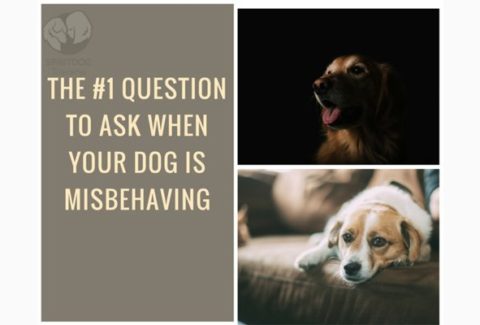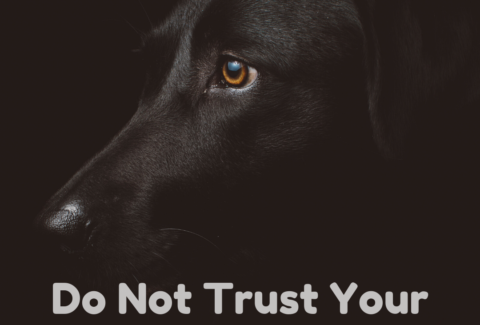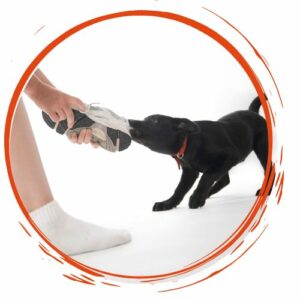6 Dog Training Myths Debunked
May 7, 2021 2021-05-22 14:166 Dog Training Myths Debunked
6 Dog Training Myths Debunked
There are 70 million dogs in the US, and more than every third household has at least one dog. Humans have lived together with dogs for hundreds of years. No other species has had anywhere close to that much success in their domestication.
Dogs are also the most commonly trained animal in the world. We tend to take that for granted to some extend. When was the last time you were impressed because someone told you they taught their dog to spin in a circle? It does not really seem like a big deal. But how would you react if that some person told you their guinea pig had learned a new trick? That same behavior, taught to a different species, seems a whole lot more impressive!
We see the fact that dogs are highly trainable as a given. Nearly everyone has trained a dog at some point in their lives.
With such high numbers of dog owners and trainer comes a number of myths about dog training. Not seeing the untruth in these myths can make dog training frustrating. We may feel like the dog is actively sabotaging training or outright refusing to do well.
Read on to learn why this is not the case. Here are the most common dog training myths debunked:
Dogs should do what we want because they love us.

It would be sweet (and I would be out of a job) if that was the case – but it is not. We can either be perpetually disappointed that their love for us is not that great – or we can find ways to make them behave regardless.
Let’s pick the latter!
Every being is going to only keep up actions as long as they pay off in some way.
If you are employed at the company of your sister, father, spouse – you would still expect to get paid, no?
Or would you want to keep on performing work that doesn’t pay off – simply out of love? Of course not.
If you don’t get paid, you may just as well stay home and watch Netflix.
Why expect differently from our dogs?
If you don’t reward your dog, he will find something else fun to do – and you won’t like it (how about a missing dog who went after a squirrel?)
Evolution has designed every being to only invest resources such as time and energy into actions that are going to be successful in some way.
Think of feeding birds for example. If you stop stocking your bird house with bird feed, the birds may still come a couple of times to check whether there is new food. But eventually, after enough disappointments, they will move on and stop frequenting your bird house.
The same happens if you completely stop rewarding your dog for behaviors and expect him to be rewarded by something as abstract as his “love for us”.
If a group of animals would keep on pursuing actions and activities that do not pay off, they would lose out against another group that moves on from unsuccessful actions. That second group is the one that makes it through evolution.
Our dogs have been designed throughout centuries to find out exactly what works out for them in which way. We need to come up with some good rewards to have them work for us reliably!
(Need some reward ideas?
A World Of Rewards
Finding The Value Where Your Dog Sees It
7 Tips For The Dog Who Runs Away On Walks)
You have to be a pack leader.

No, you don’t have to be that at all. To be honest, I am not even sure what exactly being a pack leader entails: If one believes the popular Dog Whisperer show, it consists of hissing at your dog, rolling him on his back and poking him when he does something wrong.
This is not how you form a joyful relationship with your dog. And in my opinion, a joyful relationship is what we should always strive for.
No one forces you to live with your dog, this does not have to be some eternal mini war like you may have with the neighbor who always mows his lawn at 7am on Saturdays and needs to be nagged and “punished”.
The vast majority of all dog owners voluntarily chose to live with their dogs, and why not make this life as peaceful and happy as possible for both sides?
I strive to be my dogs’ friend. You can look at the videos on this website – they do in fact listen very well, respect my requests, stay with me everywhere and don’t see a reason to every question my position in the “pack” (not sure what that position is anyway – maybe the fun parent?).
Dogs need boundaries.
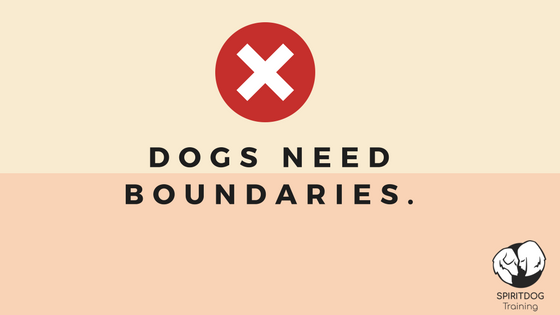
Dogs themselves really do not need boundaries.
If we are looking solely at their own happiness and contentment it’s apparent that they could live a fulfilled life in which they are allowed to eat as much as they want, chase the cat all they want, dig as many holes as they want and roll in as many disgusting things as they want.
Boundaries are needed where their needs interfere with ours – and then we should set them not so much for the wellbeing of our dogs as we should set them for the wellbeing of our relationship and life together.
That means that it makes no sense to implement rules when you do not feel they are necessary.
Do not ban your dog from the furniture because “he needs boundaries and respect”.
If you like your dog next to you on the couch – feel free to allow him there.
On the other hand, do not feel bad about imposing boundaries that are important for yourself. That’s totally ok If you do not like dog hair on the furniture! Your dog can learn to accept that the couch is not a dog zone. If you do not like your dog to be in the kitchen when you cook, that’s ok. We can teach him how to wait on a mat outside of the kitchen.
Dogs need to show you respect.
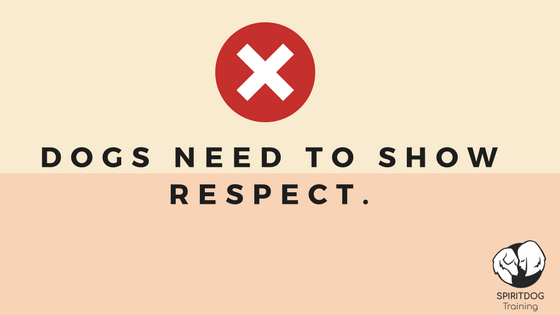
There are wide-spread ideals about how a dog can show respect for his owner – and they are very specific, such as not walking out a doorway first, not walking in front of his human, not lying in doorways where a human might have to step over him etc.
This is an anthromorphising view point of what respect means: Humans may not see it as respectful to walk out the door first instead of holding it open, or to stand in someone’s way without moving to the side.
A dog doesn’t understand these very human ideas of respect. Instead, he shows you his respect in the same way he is showing it to other dogs: By aknowledging your possession of resources, for example.
If your dog is not stealing food out of your hand, or trying to grab and run with a sock you are holding, you already have all of his respect.
Another sign of your dog respecting you is him redirecting towards you in situations that he is unsure in – does he look at you for guidance when something frightens him – such as another dog barking, or an unexpected noise?
Fantastic – he respects you. And this is a kind of respect that cannot be demanded, but only be earned.
Training with treats always is bribery.
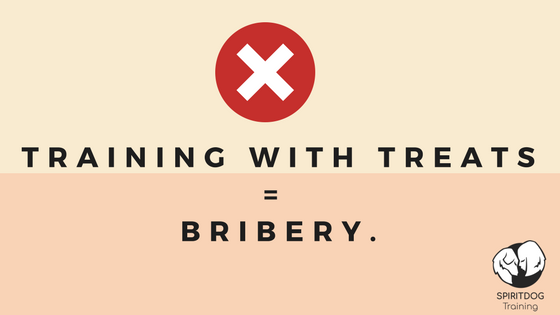
Actually, training with treats can be bribery. If you only ever train your dog with a treat in your hand, and never without any visible rewards, he will rightfully get suspicious about whether he can still earn his payment if he cannot see it.
A classical situation is us training our dogs to sit at home, with a treat held up over their head and little distractions. The dog sits, and gets the treat. This is very clear to the dog – we show him his payment in advance, and he performs at the sight of it.
We can compare this setup to a gas station. You have to prepay before you can pump gas – the gas station literally says “Show me your payment first.”
The next time we are walking our dog and we ask him to sit even though we don’t have treats with us, he will sit – and since we didn’t bring a treat, we will pat his head and tell him good dog. He learned two things here: Sitting in public may not be worth it.
And, much worse:
Only if I see the treat, I can be sure to get it. No visible treat = no reward for good behavior = not worth it.
This is a big problem – our dogs should never doubt our ability to produce valuable rewards that are worth their attention. I highly recommend to never let your dog be quite sure whether you are carrying a reward, and which one that might be (it does not need to be a treat – a ball works just as well!).
We want them to trust us that we will make their good choices pay off – just like any restaurant beyond a fast-food chain doesn’t ask for cash upfront when you get a table.
If we are not showing them the reinforcement before the behavior in order to motivate them, there is no bribery – only a dog behaving, trusting that we will make it pay off.
Don’t have a dog who is a gas station – have a dog who is a nice restaurant!
Once they’re trained, you’re done.

Unfortunately, that is not true.
With the exception of a few basic behaviors that quickly become habits – such as peeing only outside, or chewing only appropriate items – most behaviors need to be regularly refreshed.
If you get complacent and stop showing your dog what behaviors you appreciate, why should he keep performing them? In his mind, they are no longer worth it, so there is no point in investing their energy – they will rather use it to pursue goals that will earn them the reinforcement they want.
We do not always need to use treats to keep these behaviors nice and fresh – if for example you want your dog to sit before going out the door, the start of the walk itself will be his reward!
If a dog is expected to stay on the floor and not jump up at visitors, getting greeted and receiving the visitors’ attention is the reinforcement for his good behavior.
(Click here for more reward ideas)
Happy training!


